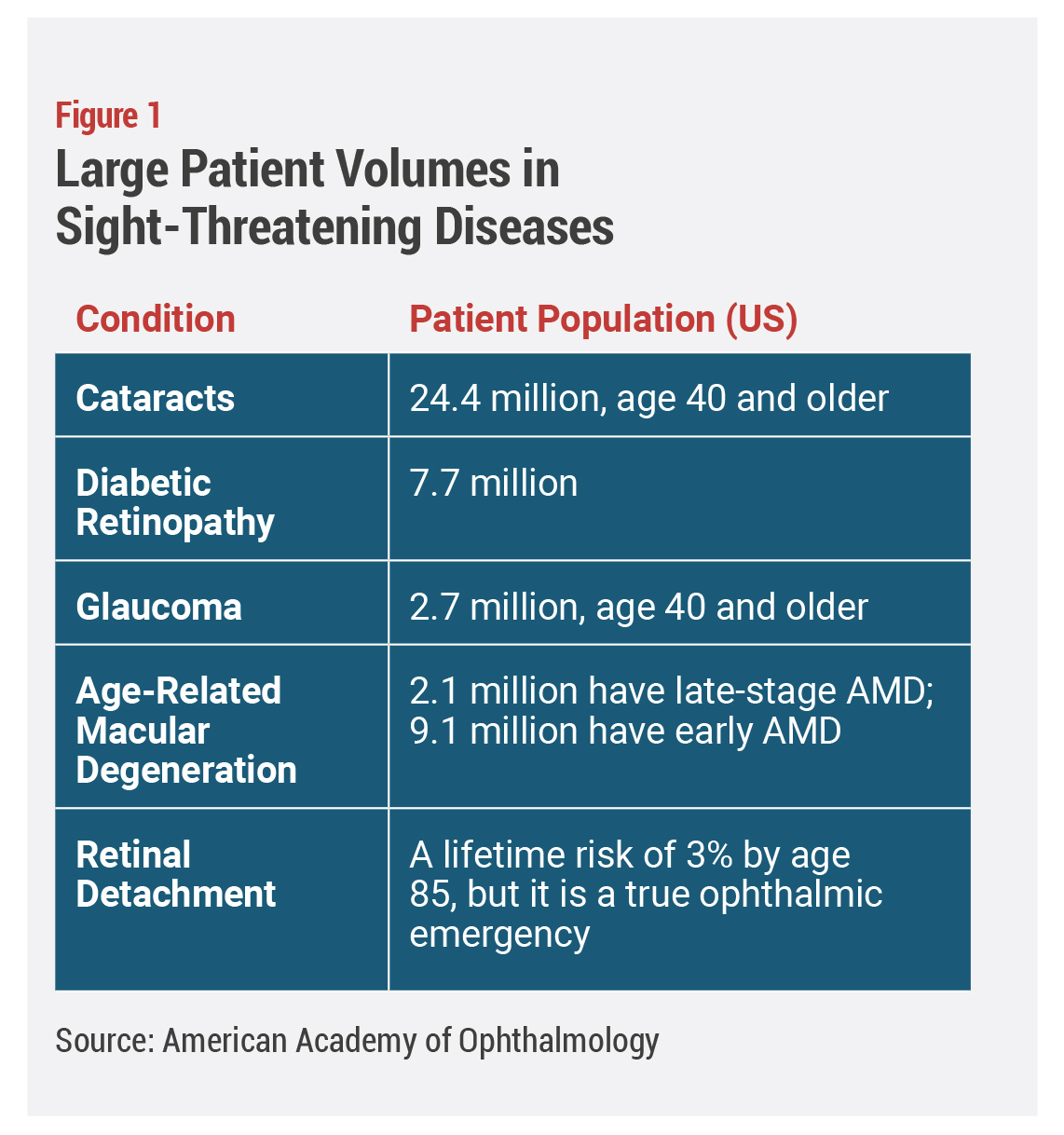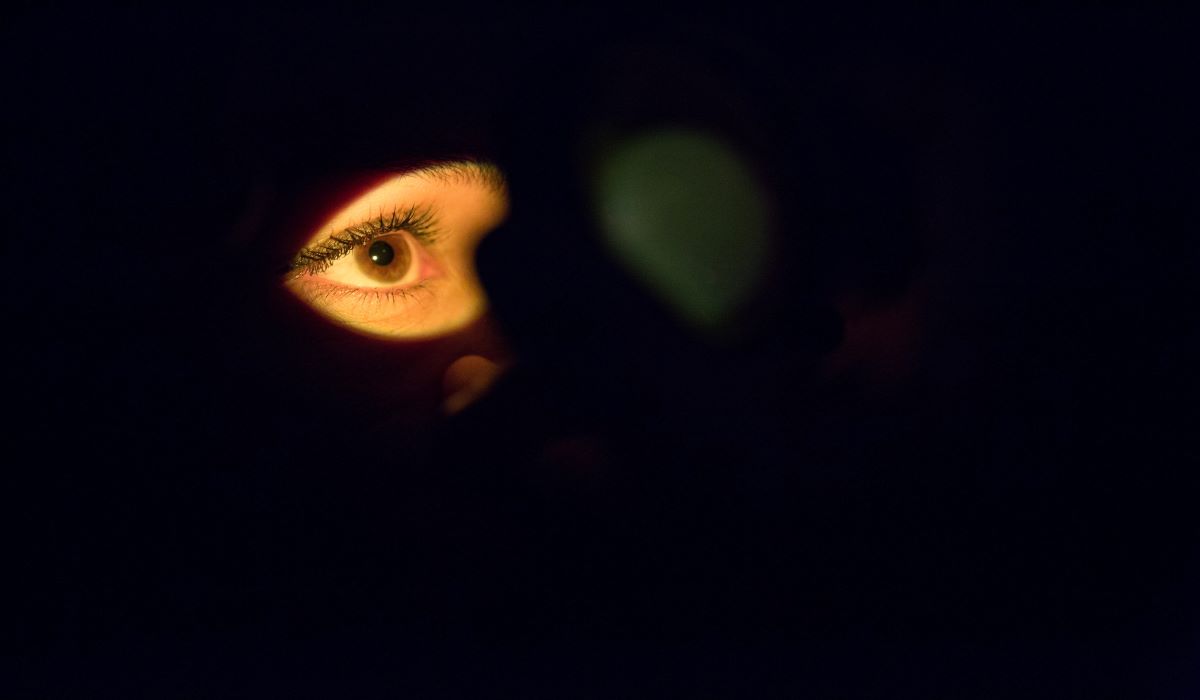ARTICLE SUMMARY:
Robotics and imaging could improve care by enabling earlier diagnoses of retinal conditions and safer, more predictive procedures. Excerpted from our recent feature article, Retinal Technologies for the Body’s Smallest Workplace.
It’s time to take a fresh look at the market for retinal disease therapies and technologies in the context of global health. While today considered a small niche of ophthalmology, where retinal specialists represent only a third of all ophthalmic clinicians with a global surgical procedure volume of just 1.6 million (not counting intravitreal injections), it is a vastly underpenetrated market given the number of people who suffer from sight-threatening diseases of the retina.
Retinal diseases are for the most part, related to aging, and if allowed to progress, lead to severe vision impairment and blindness. According to the World Health Organization, 1 billion people in the world have blindness, or moderate to severe near or distance vision impairment, that has yet to be addressed or could be prevented. In that number are 8 million people with age-related macular degeneration (AMD), 7.7. million with glaucoma, and 3.9 million with diabetic retinopathy.
For patients who require surgical treatment, the major hurdle is access to a skilled clinician. There aren’t enough retinal specialists to treat all the patients who need care. In the US, the number of ophthalmic clinicians treating retinal patients is estimated  to be about 3,800, but only 1,366 of them are dedicated retinal specialists performing the full range of retinal surgeries—vitrectomy, retinal detachment, delivery of lasers, and intravitreal injections. Of the total,2,445 (64%) provide medical retinal care, that is, just intravitreal injections and lasers, but 1,309 of those clinicians are general ophthalmologists who operate in busy practices that also perform high-volume anterior segment procedures, like cataract surgeries.
to be about 3,800, but only 1,366 of them are dedicated retinal specialists performing the full range of retinal surgeries—vitrectomy, retinal detachment, delivery of lasers, and intravitreal injections. Of the total,2,445 (64%) provide medical retinal care, that is, just intravitreal injections and lasers, but 1,309 of those clinicians are general ophthalmologists who operate in busy practices that also perform high-volume anterior segment procedures, like cataract surgeries.
The second major challenge is the anatomy of the back of the eye. There retinal surgeons are required to manipulate extremely delicate tissues in a very small space. The thickness of the retina is 250-300 microns (for reference, paper is 70-80 microns thick) and retinal veins average from 20 to 40 microns in diameter. Such tiny structures don’t provide the tactile feedback that guides surgeons in other specialties. Innate hand tremor (with amplitudes upwards of 100 microns) also makes it difficult for surgeons operating manually to achieve micron-level precision.
All of these factors make retinal surgery extremely challenging, and it’s not a subspecialty that physicians enter into lightly. It takes about 10 years of medical training; after medical school, three more years of ophthalmology residence training and two years of retinal disease training. There are more than three times as many cataract surgeons as retinal surgeons. In effect, the risk-benefit profile of conventional retinal surgery and the shortage of highly skilled surgeons conspire to delay the treatment of retinal disease until it is absolutely necessary, while early treatment would be far more effective at preserving vision.
In our recent feature article, Retinal Technologies for the Body’s Smallest Workspace, we interview two start-ups with technological solutions to the unique challenges of the retina: AcuSurgical has developed a retina-focused robotics platform in which advanced imaging will guide robotic tools able to achieve what the human hand, with its innate tremor, rarely can. EarlySight will be able to identify sooner the retinal patients who need treatment, with a novel imaging modality that helps clinicians see the retina down to the cellular level. This will enable clinicians to accomplish both early diagnosis and treatment monitoring.
Companies like these could level the playing field so that general ophthalmologists, and not just the small group of highly skilled retinal surgeons, might tackle procedures for these common retinal conditions. If advanced imaging and robotics make procedures safer and free from complications, perhaps surgeons won’t need to take a “wait and see” approach.
Trial MyStrategist.com and unlock 7-days of exclusive subscriber-only access to the medical device industry's most trusted strategic publications: MedTech Strategist & Market Pathways. For more information on our demographics and current readership click here.


